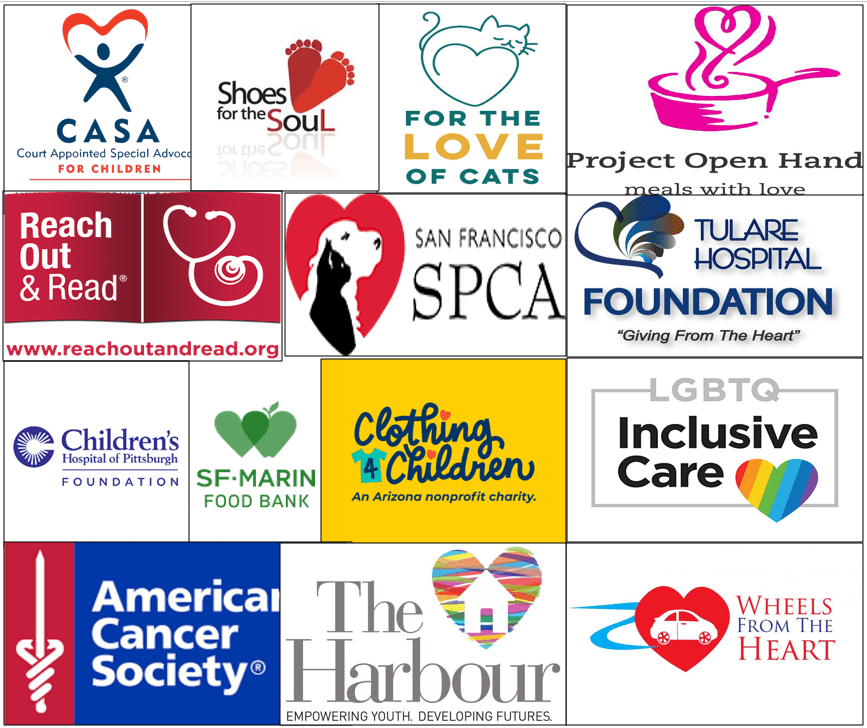 Why do people – with plenty of worries and expenses — give hard-earned money that could otherwise be spent on their own families, taxes and bills to complete strangers via philanthropy?
Why do people – with plenty of worries and expenses — give hard-earned money that could otherwise be spent on their own families, taxes and bills to complete strangers via philanthropy?
It’s not a rational thing to do.
This is a question that puzzled Charles Darwin.
While known for the theory of “survival of the fittest” (which actually was coined by the philospher, Herber Spencer), Darwin posited the notion of “survival of the kindest,” finding sympathy to be the strongest human instinct. You see, survival doesn’t necessarily mean the strongest or most aggressive. It depends, as much if not more, on cooperation and empathy.
Which would mean people give to be helpful because they’re biologically wired that way.
It simply pays off to come from the heart and be generous.
Humans are wired to be selfless.
Recent research in psychology agrees with Darwin, finding that human beings are more wired to be selfless than selfish. Dacher Keltner, a UC Berkeley psychologist and author of “Born to be Good: The Science of a Meaningful Life,” and his fellow social scientists are building the case that humans are successful as a species precisely because of our nurturing, altruistic and compassionate traits. In other words, if we don’t take care of one another as a community we will cease to thrive and survive.
Recent philanthropic research validates the fact that giving is ruled by the heart; not the head.* It’s surprising how many nonprofits don’t seem to understand this when it comes to creating communications materials. How often do you receive letters, brochures, annual reports and the like filled with numbing facts, figures, graphs, charts, fractions and percentages … 25,000 people helped; 14% more than last year; 15% living below poverty level; 78% are women of color; 15% have a disability; just 16% spent on overhead, and on and on.
Each fact makes would-be donors stop in their tracks and think.
It turns out thinking may be the enemy of feeling.
It isn’t rational thought so much as sympathetic emotions that drive most giving.
Human beings, at base, are ruled by human drives. And when we think too analytically about giving we can put the brakes on our own generous instinct.
Things to keep in mind to nurture the sympathetic emotions that stimulate philanthropy:
1. People respond to STORIES first; numbers second.
Jim Collins, in Going From Good to Great, famously noted “We measure our success by the stories we can tell.” There’s a reason people are drawn to storytelling. We’re wired for stories; they’re the earliest form of human communication. Stories help people visualize a situation, and they’re memorable. Data is hard to digest, so it doesn’t stick with you. On top of that, data seems to cause folks to want to put up their dukes to refute the numbers. Stories, conversely, draw people in making them want to hear more. If you can tell a story about one single mother who came to a Food Bank pantry so she could feed her children, donors can multiply that story by the 200,000 other people who came to pantries with their own stories.
2. Fundraising is not about money; it’s about RELATIONSHIPS.
Make your stories relatable. Fill them with personal details. Paint a visual picture. Give your donors the warm glow that comes from helping someone who clearly needs help. Don’t simply ask for money to help your organization survive. People give to people, not institutions.
3. In giving, home really is where the HEART is.
So is your website home page. I searched briefly on Google images, and found thousands of nonprofits using ♥ hearts ♥ in their logos (I’ll bet you can think of half a dozen right off the top of your head). There’s a reason. The heart is evocative of our drive to love, and be loved. Your donors want to love others; similarly, they want to feel good about their gift of love. You can nurture their empathic instincts and give them this gift, because nonprofits have an advantage over other businesses. You deliver meaning. [No, you don’t necessarily need a heart image on your home page. But… it doesn’t hurt to evoke the heart and love.]
4. In giving, people are MOVED by what touches them.
‘Moves management‘ isn’t about doing a bunch of stuff that doesn’t connect on a human level. That’s just ‘make work,’ and makes staff feel they’ve accomplished something. Not really. Ticking things off your checklist won’t generate passionate philanthropy. More is needed to move people to deeper involvement and investment. Absent physical touch, people look for emotional touches. You can offer such touches using other communication mediums. The voice is particularly expressive, which is why reaching out to constituents via telephone is a strategy worth much greater consideration than it’s currently given by most nonprofits. Call as many supporters as possible to thank them. Farm this task out to volunteers if you’ve more names than staff can handle. Don’t waste the call by failing to leave a voice message if no one picks up. Put a smile on your face, and it will come through in your voice message. It may just leave your supporter with a warm and fuzzy feeling. That’s a good deed. And… it will also likely put them in a receptive mood next time you ask for a gift.
5. In giving, people give more if they EMPATHIZE.
If you’re able to put your donor into the story, making them feel the pain being experienced, they’ll be more inclined to want to make that pain stop. Research experiments back this up, showing altruism to have a neurophysiological fingerprint. In one study, participants watched their partner (who was cooperating with the researchers) receive a pain-inducing shock. This induced empathy. When subsequently given money, either to keep (to their own benefit) or share with their partner (to their own detriment), these participants gave more to their partners than a control group who witnessed no pain. This was true even among participants deemed ‘selfish’ vs. ‘pro-social.’ Inducing empathy increased altruism across the board.
The new science of altruism, building on the physiological underpinnings of compassion, reveals what’s good for charity, and society, is also good for donors.
Everything you do with your supporters – meeting with them, networking with them, connecting via email or text with them, engaging in social media with them, thanking them — results in bonding and social connections that can offer them healthier, more meaningful lives. In fact, the U.C. Berkeley research reveals those who are most generous garner the greatest respect, influence and power.
Giving also makes people feel really good by providing a ‘warm glow’ dopamine rush. So when you offer donors the opportunity to express their generous side, you’re doing everyone a favor.
Could there be anything more win/win?
It’s important for fundraisers to fully embrace philanthropy as a positive, not a negative.
There is absolutely no reason to hold back when it comes to inviting people to open their hearts and give until it feels good.
This is a shift from the more transactional perspective of asking folks to “give until it hurts.” When donors give this way they don’t feel good about it, and they’re not likely to repeat. Transactional, one-time contributions don’t feel like ‘gifts’ so much as coerced acts. That’s not ‘philanthropy’ — aka ‘love of humanity.’ And it’s not a formula for long-term, sustainable fundraising.
Take care in your fundraising to connect to your donors’ hearts through stories, gratitude, and consistent warm touches that build relationships and community.
The communities who care for their members are the ones that survive.
* More heart-felt giving research, conducted by Camber Collective (formerly Hope Consulting), Giving USA Foundation and the Center on Philanthropy at Indiana University can be found on “Money for Good.” Many thanks to Tom Belford for his inspiring article, Don’t Think, Give, in the Agitator and the Boston Globe for their terrific overview article Why we give to charity. You may want to check out The Science of a Meaningful Life Magazine as well, with plenty of insights translatable to fundraising practice — and much more.
Year-End Fundraising Season is Upon Us!

Your all-in-one guide for ticking off things you may be missing or not quite have finished
For help with your strategies, grab my Year-End Fundraising Solution Kit — an all-in-one guide for ticking off the things you may be missing or may not quite have finished. Inside you’ll find a 63- page-long comprehensive road map to effective year-end fundraising. If you check off everything on the lists included in this guide, you’ll raise more money.
And if you’re not happy, for any reason, you have my 30-day 100% refund guarantee. If you’re not happy, neither am I.





